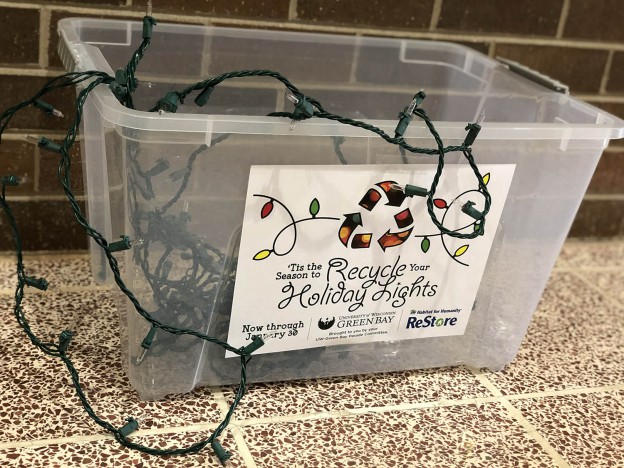
Recycle Holiday Lights for Habitat for Humanity Restore
In addition to building a float for the annual Green Bay Holiday Parade, UW-Green Bay’s Parade Committee and the student organization Habitat for Humanity, will be helping to recycle holiday lights for Habitat for Humanity Restore.
Collection boxes will be available this week through mid-January throughout the Green Bay Campus. Committee members hope that the other campuses will join in on the community service event and collect lights for their regional Restore.
Habitat for Humanity Restore accepts any working or nonworking holiday lights. Please don’t throw unused lights in the trash stream. This program runs year-round, but the holiday season is the most sought after time of the year for donations.
If you have any holiday lights that you are willing to donate, please consider doing so!
These are the locations you can drop your lights off in the designated bins:
Cofrin Library 2nd floor plaza level
Cofrin Library 1st floor alcove level
Laboratory Sciences Lounge Area
Outside the GAC Lab
Rosewood Cafe
Student Life Office
Union Ticketing and Information Desk
This article originally appeared in “Inside UW-Green Bay News” on Nov. 8, 2019

